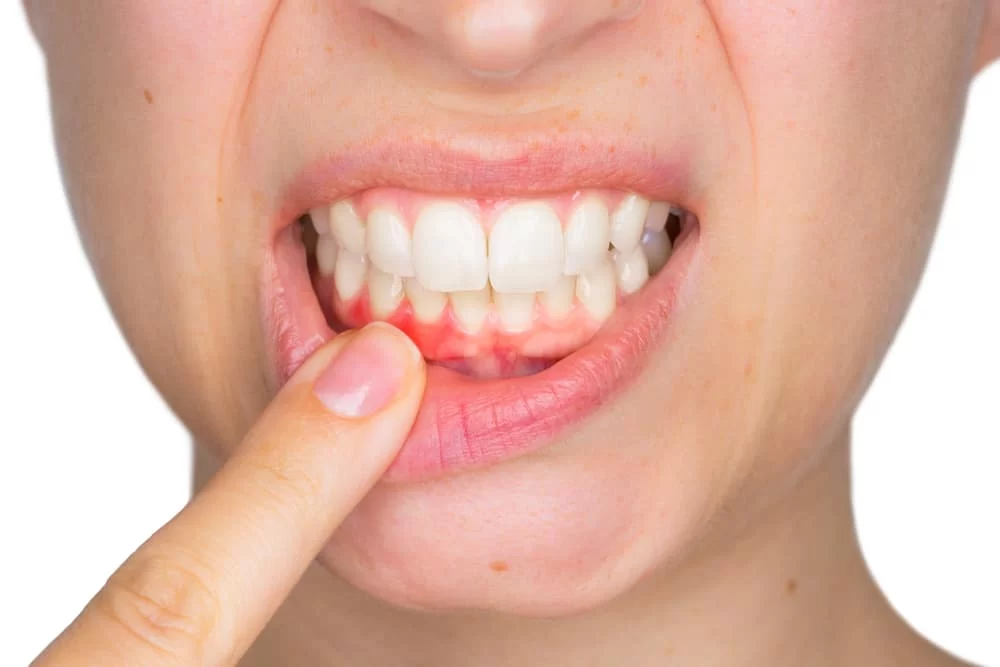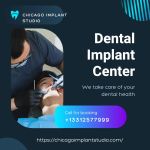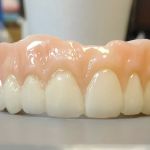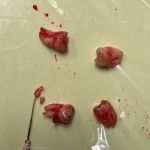
Gingivitis vs. Periodontitis: What’s the Difference and How to Treat Them
- 1. Gingivitis Overview: What Is It?
- 2. Periodontitis Overview: Understanding the Condition
- 3. Key Differences Between Gingivitis and Periodontitis
- 4. Treatment Options for Gingivitis
- 5. Treatment Options for Periodontitis
- 6. How to Prevent Gingivitis and Periodontitis
When it comes to oral health, gum disease is one of the most common yet preventable issues. Two major forms of gum disease are gingivitis and periodontitis, but many people confuse the two or don’t fully understand the difference between them. As someone who has gone through both conditions, I can tell you firsthand how important it is to recognize and address gum disease early. In this article, I’ll walk you through what gingivitis and periodontitis are, the key differences between them, and how to treat and prevent these conditions.
1. Gingivitis Overview: What Is It?
Gingivitis is the earliest stage of gum disease, characterized by inflammation of the gums due to the buildup of plaque on the teeth. This stage is usually mild, and it can be reversed with proper dental care. I remember when I first noticed that my gums were tender and bled a little when brushing my teeth—it was an early sign of gingivitis. The symptoms are typically mild but should not be ignored. Some of the common signs of gingivitis include red, swollen gums, and occasional bleeding during brushing or flossing.
Gingivitis is primarily caused by poor oral hygiene that encourages plaque to form on teeth. If left untreated, gingivitis can develop into a more serious condition, but in its early stages, it is completely reversible with regular brushing, flossing, and professional cleanings. The good news is, if you catch gingivitis early, it can be treated easily and doesn’t cause permanent damage to your gums or teeth.
2. Periodontitis Overview: Understanding the Condition
Periodontitis is a more severe form of gum disease that occurs when gingivitis is left untreated and progresses further. Unlike gingivitis, periodontitis involves not just the gums but also the bone structures that support the teeth. I’ve had a close friend who didn’t address his gingivitis and ended up developing periodontitis, which led to tooth mobility. Periodontitis can result in significant damage to the tissue and bone around the teeth, potentially causing teeth to loosen or even fall out if left untreated for long periods.
Some of the symptoms of periodontitis include deep pockets between the teeth and gums, persistent bad breath, gum recession, and tooth sensitivity. As the condition progresses, you may experience pain while chewing and notice that your teeth become loose. Periodontitis requires more intensive treatment, such as scaling and root planing, and in some cases, surgical procedures. Early detection and intervention are essential to prevent further damage to the teeth and surrounding tissues.
3. Key Differences Between Gingivitis and Periodontitis
While both gingivitis and periodontitis are forms of gum disease, there are some critical differences between them that can help you identify and treat them early. The biggest difference is the severity of the condition. Gingivitis affects only the gums, while periodontitis affects the gums, teeth, and the bone that supports the teeth. As a result, periodontitis is much more serious and can lead to tooth loss if not treated properly.
Another important distinction is that gingivitis is reversible with proper oral hygiene, while periodontitis requires more advanced treatment and can cause permanent damage to the gums and bones if left untreated. Here’s a quick breakdown of the key differences:
- Gingivitis: A mild form of gum disease, causing redness, swelling, and bleeding. Reversible with proper dental care.
- Periodontitis: A more advanced form of gum disease that damages the teeth and bone structure. Requires more intensive treatment and may cause permanent damage.
4. Treatment Options for Gingivitis
Treating gingivitis is relatively simple and can usually be done with a consistent home care routine. I remember the first time I was diagnosed with gingivitis, and my dentist recommended I step up my oral hygiene game. The following steps can help treat and prevent gingivitis:
- Brush Twice a Day: Make sure to brush your teeth for at least two minutes using fluoride toothpaste. Regular brushing removes plaque and prevents it from hardening into tartar.
- Floss Daily: Flossing removes plaque and food particles from between the teeth and below the gumline, areas that brushing alone might miss.
- Regular Dental Check-ups: Visit your dentist regularly for professional cleanings. During these visits, your dentist will remove tartar buildup and check for any signs of gum disease.
5. Treatment Options for Periodontitis
Periodontitis requires more intensive treatment to stop the progression of the disease. If you’re diagnosed with periodontitis, your dentist or periodontist may recommend one or more of the following treatments:
- Scaling and Root Planing: This deep cleaning procedure removes tartar and bacteria from below the gumline and smooths the tooth roots to help gums reattach to the teeth.
- Antibiotics: In some cases, your dentist may prescribe antibiotics to help control infection and reduce inflammation.
- Oral Surgery: In severe cases, surgical treatments such as flap surgery or bone grafting may be required to repair damage caused by periodontitis.
6. How to Prevent Gingivitis and Periodontitis
The best way to avoid both gingivitis and periodontitis is through prevention. Regular and thorough oral care is the most effective way to keep your gums healthy. Here are some tips I’ve found useful in maintaining my own oral health:
- Practice Good Oral Hygiene: Brush and floss daily to keep plaque from building up on your teeth.
- Eat a Healthy Diet: A balanced diet rich in vitamins and minerals can help maintain healthy gums.
- Avoid Smoking: Smoking is a major risk factor for gum disease, so quitting can significantly reduce your risk of developing gingivitis or periodontitis.
If you're interested in learning more about gum disease prevention or need professional dental advice, I highly recommend checking out Dentistry Toothtruth. Their expert resources can guide you through understanding gum health, treatment options, and more.







 Chicago Implant Studio4.0 (60 review)
Chicago Implant Studio4.0 (60 review) Udis & Sethi Orthodontics5.0 (128 review)
Udis & Sethi Orthodontics5.0 (128 review) Bristol Dental Group4.0 (183 review)
Bristol Dental Group4.0 (183 review) Oral Surgery Hawaii4.0 (385 review)
Oral Surgery Hawaii4.0 (385 review) LAX DENTAL and ORTHODONTICS4.0 (107 review)
LAX DENTAL and ORTHODONTICS4.0 (107 review) Spencer Dental & Braces4.0 (459 review)
Spencer Dental & Braces4.0 (459 review) The Importance of Oral Health Education During Pregnancy for a Healthy Pregnancy
The Importance of Oral Health Education During Pregnancy for a Healthy Pregnancy Best Tips for Brushing Your Teeth Properly for Healthy Gums: Essential Techniques for Oral Health
Best Tips for Brushing Your Teeth Properly for Healthy Gums: Essential Techniques for Oral Health Why Skipping Dental Checkups Can Lead to Bigger Oral Health Problems
Why Skipping Dental Checkups Can Lead to Bigger Oral Health Problems Advantages of Porcelain Dental Restorations
Advantages of Porcelain Dental Restorations How Can Diabetes Cause Tooth and Gum Problems? Preventing and Managing Oral Health Issues
How Can Diabetes Cause Tooth and Gum Problems? Preventing and Managing Oral Health Issues Healthy Habits for Promoting Good Oral Health and Hygiene: Tips for a Healthy Smile
Healthy Habits for Promoting Good Oral Health and Hygiene: Tips for a Healthy Smile